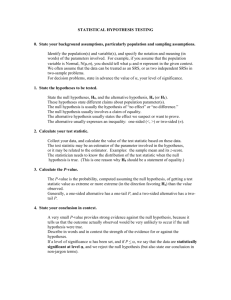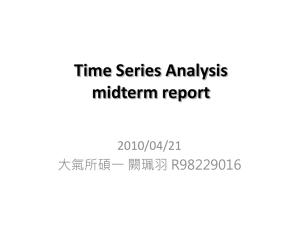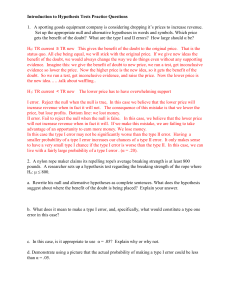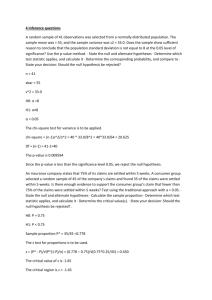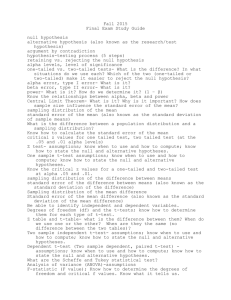Appendix: Details of the Global test for binary outcome To construct
advertisement
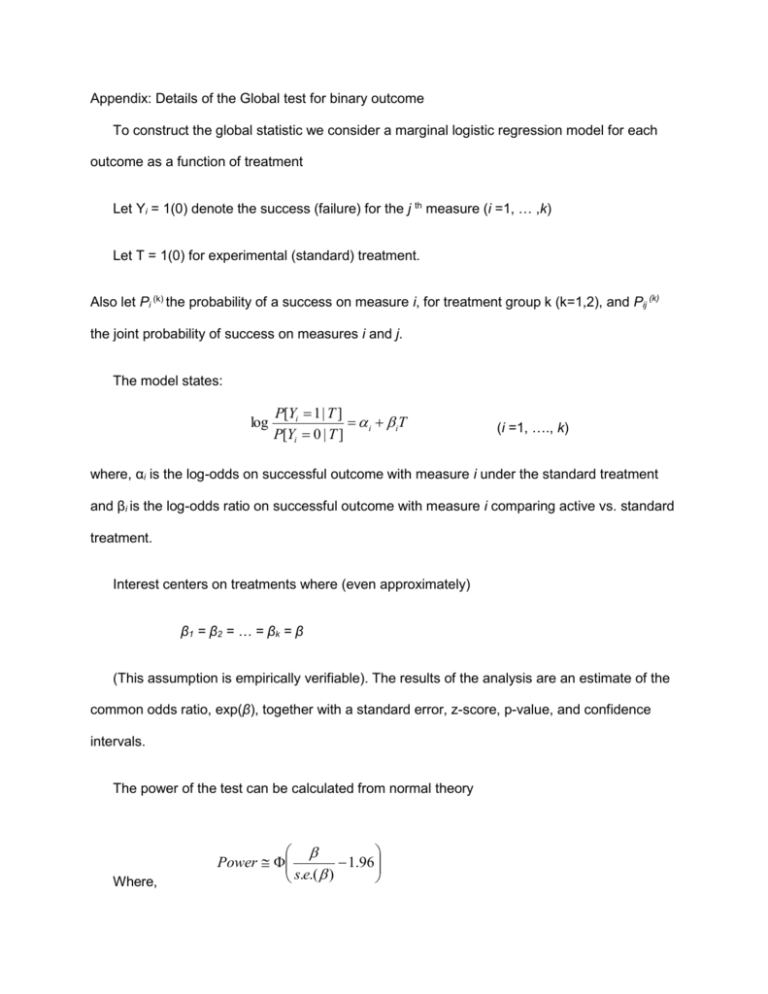
Appendix: Details of the Global test for binary outcome
To construct the global statistic we consider a marginal logistic regression model for each
outcome as a function of treatment
Let Yi = 1(0) denote the success (failure) for the j th measure (i =1, … ,k)
Let T = 1(0) for experimental (standard) treatment.
Also let Pi (k) the probability of a success on measure i, for treatment group k (k=1,2), and Pij (k)
the joint probability of success on measures i and j.
The model states:
log
P[Yi 1 | T ]
i iT
P[Yi 0 | T ]
(i =1, …., k)
where, αi is the log-odds on successful outcome with measure i under the standard treatment
and βi is the log-odds ratio on successful outcome with measure i comparing active vs. standard
treatment.
Interest centers on treatments where (even approximately)
β1 = β2 = … = β k = β
(This assumption is empirically verifiable). The results of the analysis are an estimate of the
common odds ratio, exp(β), together with a standard error, z-score, p-value, and confidence
intervals.
The power of the test can be calculated from normal theory
Where,
Power
1.96
s.e.( )
s.e. 2 ( ) 1 / ij (1' 11) 1 ,
i
j
1 { ij },
Pij(1) Pi (1) Pj(1)
Pij( 2 ) Pi ( 2 ) Pj( 2 )
(1)
(1) (1)
(1)
n 2 Pi ( 2 ) Qi( 2 ) Pj( 2 ) Q (j 2 )
n1 Pi Qi Pj Q j
A 100(1-)% confidence interval for the common parameter can be obtained as
Procedure for testing the treatment effect on the individual measures (closed test procedure)
Upon rejection of the global null hypothesis (which involves all K outcome measures), all null
hypotheses that specify no treatment effect among subsets of K-1 outcome measures can be
tested in the second step. In the third step, all null hypotheses that involve a subset of K-2
outcome measures can be tested if, and only if, each and every null hypothesis that implies it
has been rejected in the second step. The procedure continues in this manner, testing
hypotheses that specify no treatment effect among subsets of successively fewer outcome
measures, until no more hypotheses can be rejected. Thus a hypothesis about a single
outcome measure will be tested if, and only if, all null hypotheses involving this measure
together with other measures have been rejected in previous steps. At each step, we conduct
every hypothesis test at the level of significance. So say that the treatment truly has no effect
on measures 1, 2, and 3 (i.e. β1 = β2 = β3 = 0) and it has a positive effect on the other
measures, (i.e. all the remaining measures have a positive value of βj). In order to make a Type
I error, one of those 3 measures would have to be tested and reject the hypothesis of no
treatment effect. To get to the testing of any of these measures individually, the test of the
global hypothesis β1 = β2 = β3 = 0 would need to lead to rejection. Since the null hypothesis is
true for that test and that single test is carried out at the level of significance, the test will reject
the null hypothesis no more than percent of the time. Thus, regardless of which subsets
of measures the treatment truly has no effect on, the chance of declaring a positive effect on
any of them is no more than





